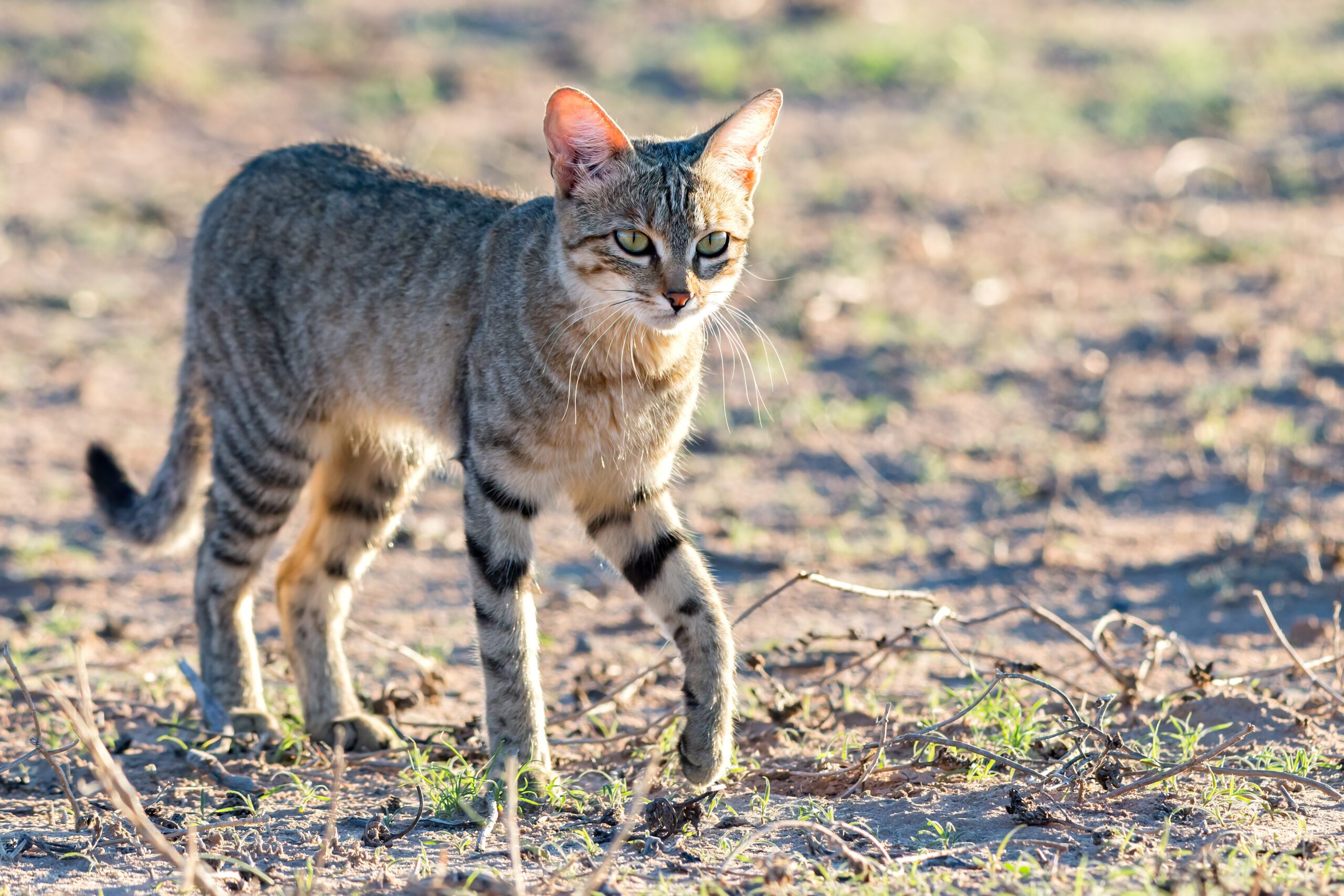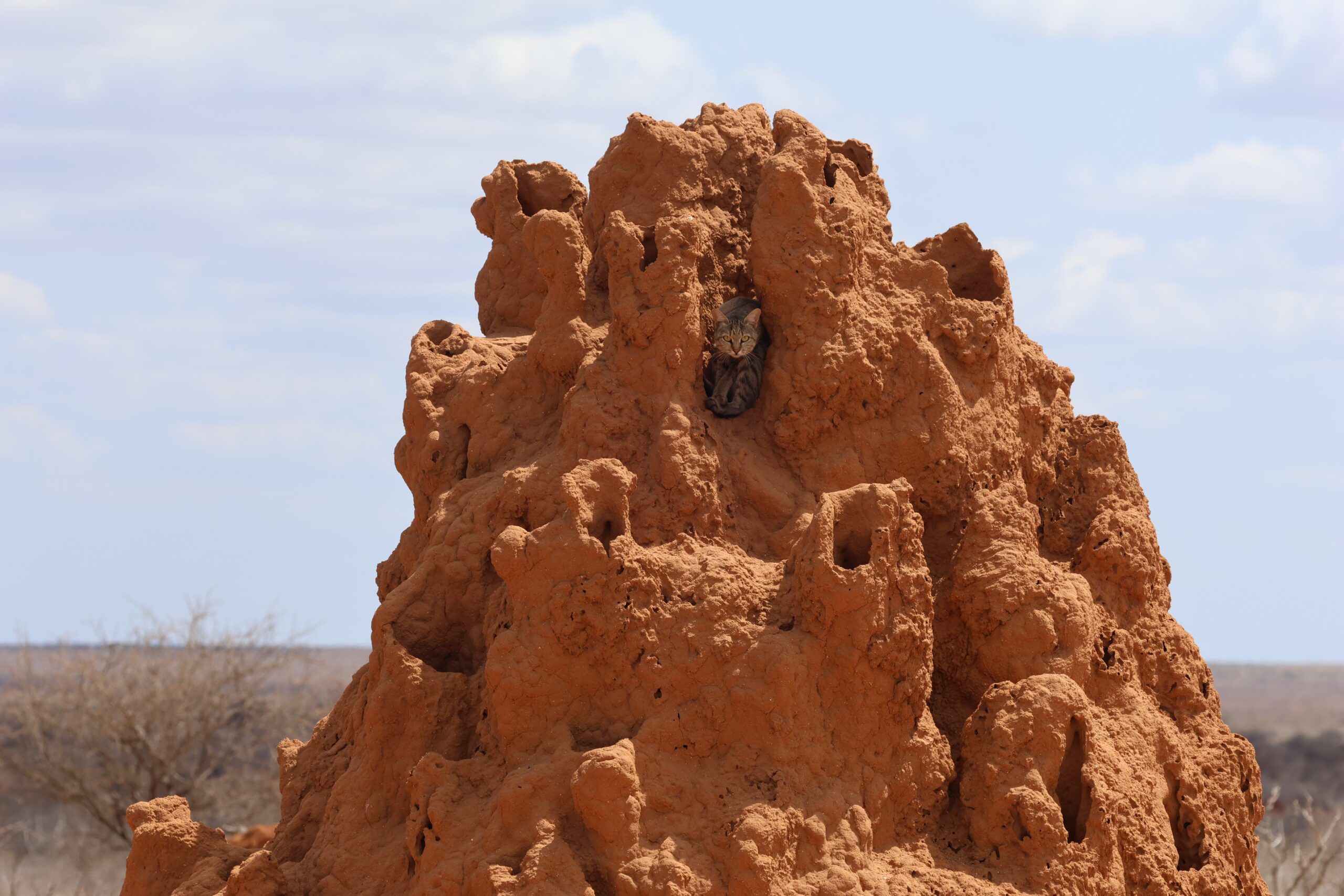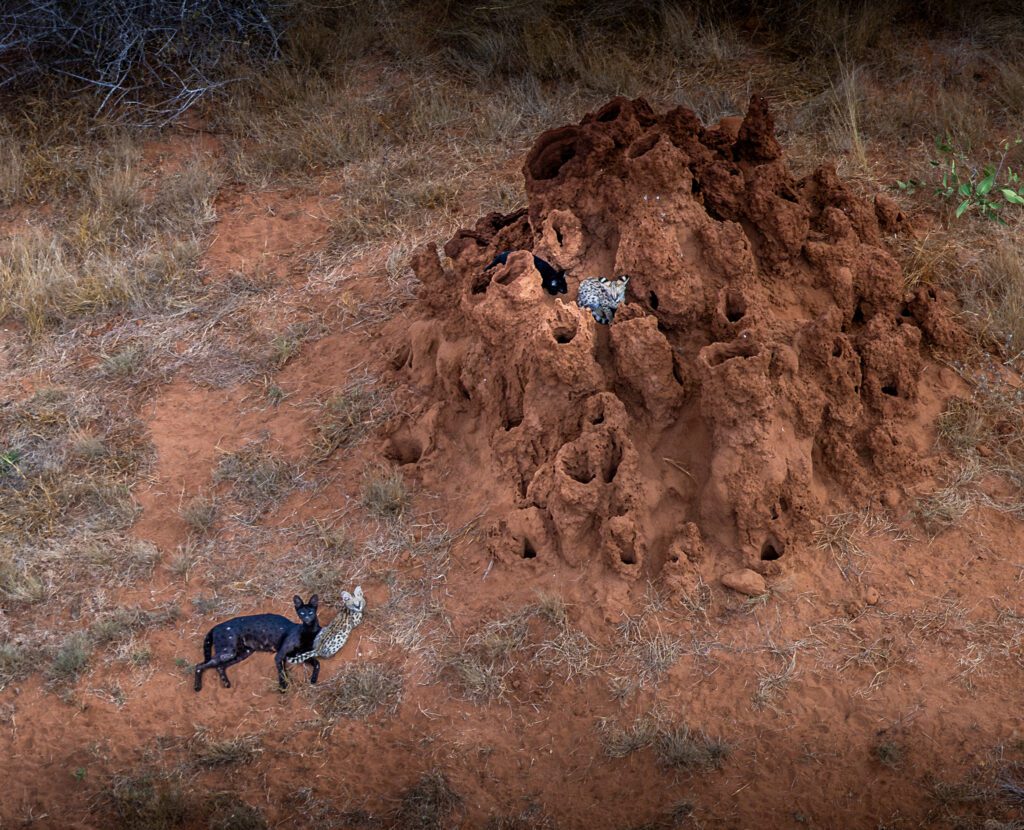The African Wildcat (Felis lybica) is one of Africa’s most widespread but least-seen predators. Despite its modest size, it holds an extraordinary place in human history—it is believed to be the ancestor of every domestic cat alive today. In Tsavo, this elusive hunter roams the scrublands and savannas, a rare glimpse of a wild lineage that has endured for millennia.
What does an African Wildcat look like?
African wildcats are about the size of a large housecat:
-
Head-body length: 45–80 cm (17–31”)
-
Tail length: 24–37 cm (9–14”)
-
Weight: 3–8 kg (6–18 lbs)
They have longer legs than domestic cats, giving them a more upright posture when sitting and a distinctive walking style more like a cheetah than a pet cat. Their coats range from reddish to sandy-yellow, tawny-brown, or grey, marked with faint stripes and spots. Black-tipped hairs give them a speckled look, and their legs are banded with dark bars.
Two features stand out: a rusty-red tint on the backs of the ears and a long, thin, black-tipped tail. These traits, along with their long legs, help distinguish true wildcats from domestic cats or hybrids.
How big is an African wildcat?
Roughly the size of a large housecat—up to 80 cm long and weighing 3–8 kg.

Evolutionary origins
African wildcats are thought to have diverged from the European wildcat (Felis silvestris) thousands of years ago, adapting to Africa’s dry landscapes. In ancient Egypt, cats resembling the African wildcat appear in tomb paintings and bronze mummy cases—evidence that they were the species first domesticated, giving rise to the household cat (Felis catus).
What did the African wildcat evolve from?
It evolved from a shared ancestor with the European wildcat but became Felis lybica, the distinct African species that later gave rise to the domestic cat.
Range and habitat
The African wildcat has one of the widest ranges of any small feline:
-
Found throughout most of Africa, across the Arabian Peninsula, and as far as India, Mongolia, and western China.
-
Habitats include deserts, semi-deserts, savannas, scrub grasslands, rocky hills, and open forests.
-
Absent only from dense tropical rainforests.
-
In Kenya, including Tsavo, they inhabit savannas and semi-arid zones and have been recorded above 3,000 m.
Ecology and behaviour
African wildcats are mostly solitary and largely nocturnal, though they may be active in the early morning or late afternoon. They are ground hunters but climb well, stalking rodents, birds, reptiles, insects, and occasionally small livestock or young antelope.
They adapt flexibly to prey cycles: in years of rodent booms they thrive, producing large litters, but they are equally adept at taking birds, lizards, and even scavenging when necessary.
Sexual separation in diet: Larger males often select bigger prey, while smaller females target more numerous, smaller prey items. In southern Africa, wildcats have been observed shifting hunting strategies depending on annual and seasonal prey availability.
Territorial by nature, they mark ranges with scent. Studies show female ranges of 6–10 km² in South Africa and one male in Kenya occupying 4.3 km² near Lake Nakuru.

Reproduction
-
Breeding seasons: Sept–March (southern Africa) and Jan–March (northern Sahara).
-
Gestation: 56–68 days.
-
Sexual maturity: 9–12 months.
-
Lifespan: Up to 16 years.
Threats and conservation
The greatest threat to the African wildcat is hybridization with domestic cats. Cross-breeding may mean that few genetically pure wildcats remain outside remote protected areas.
Other threats include:
-
Competition and disease from feral cats.
-
Being killed in predator control efforts or as roadkill.
-
Persecution for poultry and lamb predation.
Despite this, the species is currently classified as Least Concern on the IUCN Red List (as part of the Felis silvestris/lybica complex). Protecting genetically pure populations remains a conservation priority.
Other wild Ccats in Tsavo
Tsavo is home to a remarkable diversity of wild cats, ranging from the smallest to the most iconic:
-
Lions (Panthera leo) – Tsavo’s lions are famous for their unusual manes. Many males have very underdeveloped or absent manes, an adaptation thought to suit the region’s thorny, arid environment.
-
Leopards (Panthera pardus) – Elusive and nocturnal, often seen draped across tree branches.
-
Cheetahs (Acinonyx jubatus) – The fastest land mammals, thriving in Tsavo’s open plains.
-
Servals (Leptailurus serval) – Long-legged, spotted cats of grasslands and wetlands. Tsavo is one of the rare places where melanistic (black) servals have been recorded.
-
Caracals (Caracal caracal) – Powerful medium-sized cats with distinctive tufted ears.

The African wildcat is rarely seen, blending almost seamlessly into Tsavo’s scrublands and savannas. Yet it is one of the most significant species in Africa’s natural heritage—an elusive survivor that connects the wild landscapes of Tsavo to the cats that live in our homes. Protecting it ensures that this ancient lineage endures, alongside Tsavo’s other remarkable cats, from the maneless lions to the shadowy melanistic serval.

